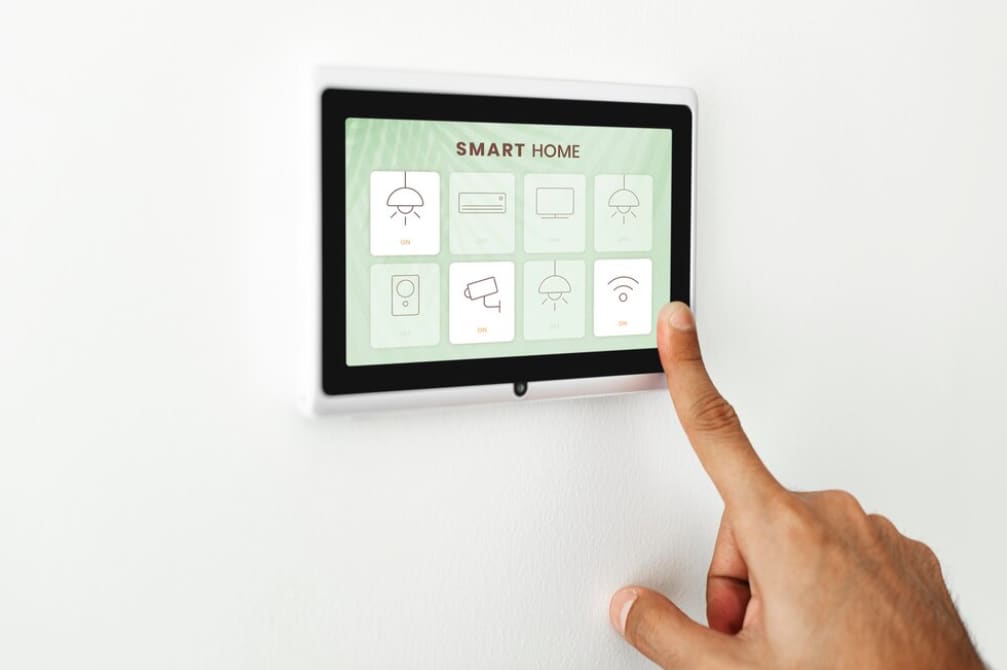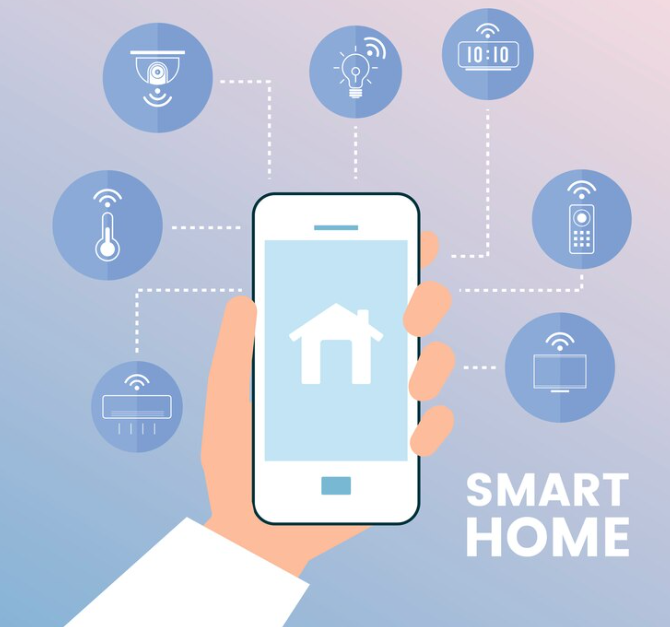Believe it or not, the once conceptual idea of home automation has swiftly become a practical reality, thanks to the rapid evolution of smart technology. This innovation isn’t just for elaborate setups in commercial spaces or luxury homes anymore; it’s become user-friendly, widely available, and all-encompassing, providing a myriad of benefits for all kinds of users. Understanding the fundamentals of a Home Automation System sets the stage to explore the top-tier home automation solutions currently leading the market.
So, what is home automation, and what’s the mechanism behind it? Let’s delve into how this technology is revolutionizing the way we interact with our home environments, enhancing customization, efficiency, comfort, and security.
Intro to Smart Home Systems
Smart home systems, commonly referred to as home automation, encompass a network of interconnected devices that enhance the comfort, energy efficiency, and security of your living space.
The field, also known as domotics—a fusion of the Latin “domus” for home and the Greek “otics,” implying automated processes—enables the centralized management of your home’s functions. This includes appliances, illumination, temperature systems, and security measures, all controllable through the internet, remote devices, or smartphones.
In essence, smart home technology grants comprehensive control over your home’s operations. It’s engineered to optimize energy usage, reduce costs, fortify security, streamline routine activities, and ultimately simplify your lifestyle.
Intelligent Home Integration Systems

The concept of intelligent home integration might be newer to some, but it’s likely you’re already using some form of this advanced technology. Common standalone components include programmable climate controls, automated lighting solutions, remote-operated blinds, smart TVs, and networked audio systems.
Intelligent home technology can be broadly categorized into two types:
- Stand-Alone Intelligent Devices: These are devices equipped with user-friendly interfaces for manual programming and do not require internet connectivity (like Bluetooth, LTE, or Wi-Fi) to function. Examples include an automated coffee machine set to brew at a particular time or a manually-set digital thermostat;
- Network-Enabled Smart Devices: These devices are interconnected and can be controlled remotely over a network. This category includes appliances such as fridges with interactive displays and versatile functionality, as well as systems for home security, lighting, and climate control.
Network-enabled smart devices provide the convenience of being managed via smartphones, tablets, or computers, offering control and monitoring capabilities whether you’re in the comfort of your home, at work, or on a trip across the globe.
The Fundamentals of Integrated Home Systems
Integrated home systems, or complete home automation, are networks where smart devices and systems converge, resulting in a cohesive smart home environment. The architecture of a home automation network is built upon three foundational components:
Monitoring Units
These systems are equipped with advanced sensors adept at detecting voice commands, motion, temporal shifts, changes in ambient light, and temperature variations, to list a few. By setting your preferences, these sensors act as the operational eyes and ears, maintaining the seamless flow of the automated processes within your home.
Execution Devices
Execution devices in home automation are the tangible apparatuses—like switches, mechanical motors, and motorized valves—that actualize the functions within the system. These smart execution devices respond to the remote directives issued from a central control unit, carrying out the programmed actions.
Command Centers
The command centers of home automation are the interfaces—such as smartphones, tablets, or personal computers—through which you communicate with your home’s automation system. These command centers enable you to send instructions and receive updates on your home’s smart features, providing the capability to manage your home’s automated elements from any location.
A Residence Tailored to Your Needs

Harnessing the trio of sensors, actuators, and controllers, a smart home system can be the maestro of various automated operations. Imagine programming your domicile to lower shades at dusk or to modify the thermostat as you depart for work, all on a set schedule.
Your setup could also be reactive, initiating actions based on specific triggers. For instance, your system could be set to unlock the door and activate select lights as your smartphone comes within proximity of your entrance.
Furthermore, such systems grant you the power to correct unforeseen mishaps from afar—like disabling an active oven or closing an open garage door once you’re already away from home.
Smart home systems are versatile, offering an array of tailor-made services and features. Among the most sought-after functionalities are:
- Comfort and energy management with automated temperature and lighting adjustments;
- Convenience in appliance management and lawn watering systems;
- Enhanced safety with fire, carbon monoxide detection, and advanced security setups;
- Live video feeds and keyless home entry for security;
- Practicality with instant notifications and voice-command capabilities;
- Integration with digital assistants for streamlined control.
While a fully automated home may encompass all these aspects and beyond, the true charm of home automation lies in its adaptability, allowing you to curate a system that ranges from the fundamental to the most intricate setups imaginable.
Conclusion
Home Automation embodies the future of comfortable living. It is a testament to how smart technology can revolutionize our everyday lives by offering greater control, improved efficiency, and unparalleled convenience. As we continue to evolve in the digital age, home automation systems will increasingly become an integral part of our homes, transforming them into ever-smarter, safer, and more efficient living spaces.
